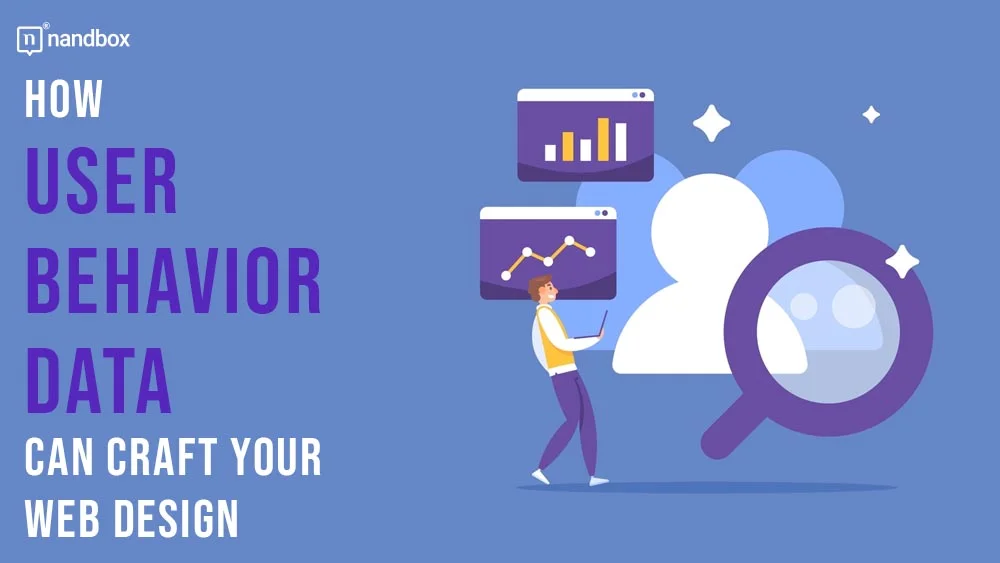An impactful website is no longer just about aesthetics—it’s about understanding your users. Web design optimization has evolved to be driven by data, specifically user behavior data, which provides insights into how visitors interact with your site. Users demand an intuitive website experience that resonates with their goals and solves their problems with a mouse click.
From page navigation patterns to engagement with forms, this data allows businesses to craft highly personalized and functional web designs that improve user experience. User behavior data can help you turn your website into a powerful tool that not only looks great but also drives conversions and keeps users coming back.
What is User Behavior Data?
User behavior data is the collection of individual interactions with your website. This behavior data allows you to evaluate user preferences, click patterns and engagement. Even the biggest brands, such as Airbnb and Spotify, rely on user behavior data.
What are the Types of User Behavior Data?

User behavior data comes in various types. Each type offers unique and valuable insights into how users interact with your website. Data types are classified into user interactions and user preferences.
Often, you will need to set up an analytics tool manually on your websites to monitor behavior data. The most common tool is the Google Analytics.
Data Collected from User Interactions
User interactions are collected while a user is browsing your website. These data sets are mostly quantitative. Here are a few of the data points that track user actions on your website:
- Click data: links, buttons, or web elements users click on most frequently.
- Scroll depth: how far users scroll down a page before leaving.
- Time on page: how long users spend on different pages or sections of your site.
- Form submissions: how often users complete and submit forms on the site.
- Navigation patterns: the paths users take through the site.
- Bounce rate: when users visit your website but leave without doing anything.
- Exit rate: specific page where users leave your site, which is useful when evaluating conversion strategies.
Data That Can Provide Insights into User Preferences and Behavior Patterns
User preferences and behavior patterns involve qualitative evaluations of user interactions. These data sets provide in-depth insights into how users interact with your website. Here is the data you can use to establish a pattern or preference for your users.
- Heat maps: visual representations of where users click or hover most on a page.
- Session recordings: videos of individual user sessions, showing their entire journey through the site.
- User feedback: direct comments or ratings from users about their experience.
- A/B testing results: comparisons of how users interact with different versions of a page or element.
- Demographic data: information about user age, location, device type.
What’s the Role of Forms in Data Collection?
Forms are critical customer data collection points on your website. Thus, optimization of this website element should be one of your priorities. A highly optimized and attractive form encourages user engagement on your websites.
Here are some common types of web forms:
-
- Contact forms allow users to ask questions.
- Lead generation forms capture information details for marketing strategies or follow-ups.
- Survey forms collect opinions or feedback.
- Registration forms sign up for a subscription or account.
- Order forms allow users to complete a purchase online.
Important metrics to track in forms include:
- Form abandonment rates: This shows when users start filling out a form but don’t finish.
- Form Field engagement: This analyzes which form fields users interact with the most or least.
- Conversion rates: This measures how effective your form design is in getting users to complete it.
Putting Users First: The Essence of User-Centered Design
A user-centered philosophy prioritizes user preferences throughout the web design process. With user behavior data, you can create engaging designs tailored to your users and target audience goals and expectations. This approach not only focuses on aesthetics but also blends the principles of UI/UX design for more accessibility and functionality.
UI design is all about the look and feel of the website. Elements like buttons, fonts, and color schemes should be visually appealing and aligned with brand identity. UX design, on the other hand, goes deeper, focusing on how users navigate and interact with your site. It considers how efficiently users can complete tasks and how enjoyable or frustrating their experience is. When you combine insights from user behavior data with strong UI/UX principles, you can create a website that is not only beautiful but also easy to use and navigate. To ensure your site performs at its best, seek out professionals who specialize in UI/UX services. Expert designers can help you fine-tune every detail, optimizing both the visual appeal and functionality of your website to meet your users’ needs and keep them engaged.
How Does User Behavior Data Provide Insights for Effective Design Decisions?
According to Harvard, Coca-Cola leverages behavior data to track its customers’ evolving tastes. User behavior data offers objective insights into user interactions and preferences that may result in innovations. Moreover, this data-driven approach allows your web designers to create beyond assumptions.
Here are key strategies or focus areas where user behavior data can be applied to improve website design and functionality:
Improve User Experience
To improve user experience, identify the problems users face when interacting with your website.
For example, high bounce rates, short time spent on a page, or low scroll depth can indicate that users are leaving a page too soon. User feedback is also valuable in figuring out whether the content or design of your site is causing frustration.
Real-world examples include Amazon, which uses dynamic pricing to enhance the shopping experience, and Marriott Hotel, which is experimenting with face recognition for faster, receptionist-free check-ins.
Data-Driven Navigation Structure
User behavior data can be a valuable source in evaluating the effectiveness and efficiency of a website’s navigation structure.
For example, click patterns and user flow data show that users search for a particular product category. Therefore, it might make sense to feature this category more prominently in the main navigation.
You can also use data on heatmaps to assess what parts of your website draw attention from your target audience. Uber has used this data to simplify navigating its app.
Use Data to Personalize Landing Pages
A landing page is a marketing tool for generating conversions and lead magnets. You can optimize and personalize landing pages that speak directly to different user segments by analyzing user demographics, browsing history, and interaction patterns.
For instance, the Slack landing page includes a vibrant image and one simple form that is more likely to be completed.
This level of personalization can significantly improve website engagement rates by providing users with more relevant and compelling experiences.
Optimize Calls to Action (CTAs)
Highly optimized CTAs direct users in performing desired actions and lead to higher conversion rates. Thus, regular evaluation of user behavior data can enhance their effectiveness.
With click-through rates and A/B test results, you can refine the placement, design, and keywords of CTAs. These improvements can maximize their impact.
For example, Spotify introduced CTA cards to its podcast ads and even published instructions on optimizing these cards when placing ads. This move by Spotify amplifies the importance of CTAs.
The Future of AI in Data-Driven Design
The future of AI in data-driven design is rapidly evolving, with 79% of businesses already integrating AI into their processes. Even governments are now using AI in their work. Here’s how AI helps:
- Personalized user experiences: AI can tailor website layouts and content to individual users in real-time.
- Automated design generation: By analyzing user behavior data, AI tools can quickly create design elements.
- Intelligent e-commerce: AI powers personalized product recommendations to improve the user’s online shopping experience.
- Enhanced public services: Government agencies are using AI-driven chatbots to efficiently handle citizen inquiries on their digital platforms.
While AI is great at analyzing data and making quick decisions, human designers are still important. They ensure that designs feel personal and authentic, not just machine-made.
Conclusion
User behavior data is a powerful tool for crafting effective web designs. With these insights, you can design user-centered websites that look aesthetically great and convert well. At the same time, these data-driven websites can give user-dependent digital experiences. Moreover, you can improve the overall performance of your website with AI.




